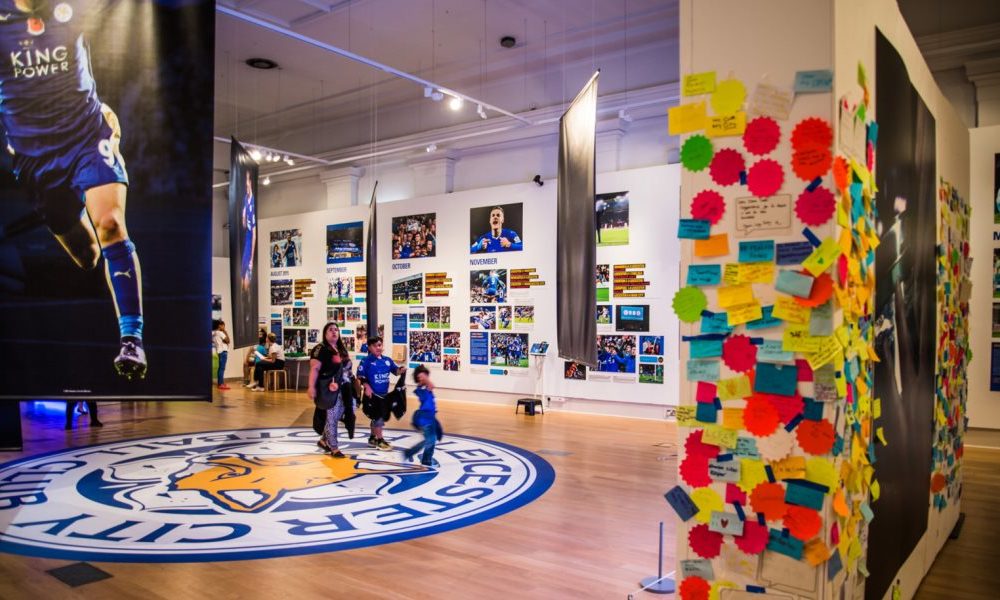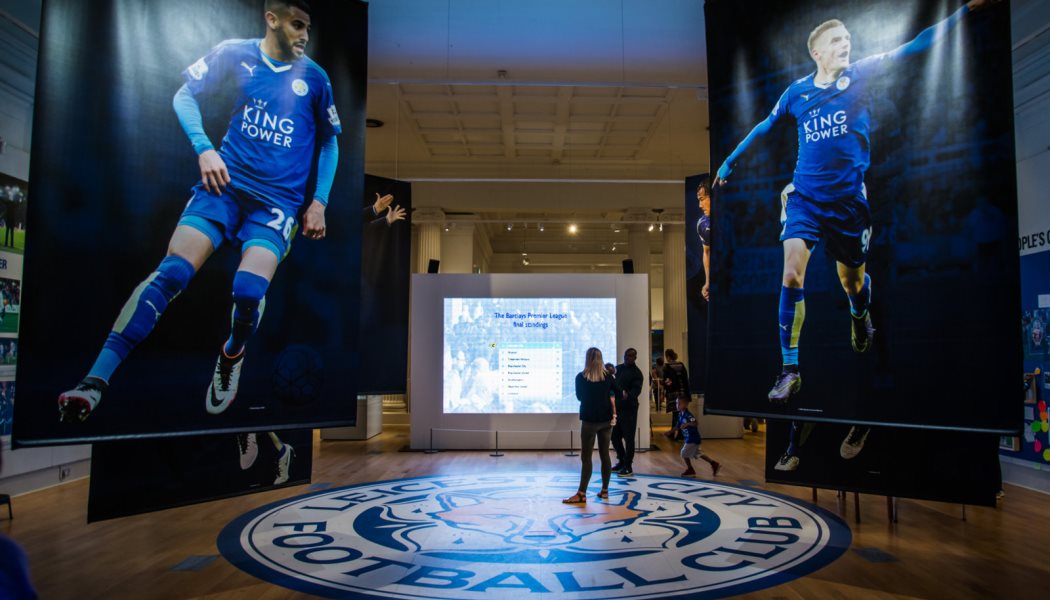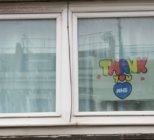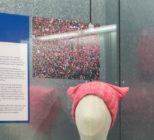Reacting to events in a museum can be a calculated risk as was the case last March when New Walk Museum and Art Gallery decided to cancel a planned summer exhibition and take on the challenge of covering a story that was taking the sports world by storm.
In the spring of 2016 the city of Leicester was in raptures as its football team was top of the Premier league and showing no signs of being toppled, drawing attention from around the world.
Having survived relegation the previous season it was one of the most unlikely of underdog stories and one which Matthew Constantine Collections, Interpretation & Learning Manager at the New Walk Museum and Art Gallery, could not ignore.
“When we sat down as a team in March and they were still top of the league, there was huge interest it was a case of how do we respond to this, should we create a small display, should we be collecting,” he says. “My feeling was we could either wait 100 years and cover the centenary or we could respond immediately and become part of the story and find a way to contribute.”
Constantine got the ball rolling by contacting the council’s press team who were able to put him in touch with the right people. A key figure was Leicester City FC historian John Hutchinson, who was a big believer in the exhibition and had been collecting objects over the course of the season. He was able to provide objects such as corporate gifts, signed shirts and football boots and also paraphernalia such as cardboard clappers given out to fans at matches to make a noise.
“That’s what gave us content when we were looking at a blank sheet of paper and an empty gallery,” he says. “And that’s how we got sound and video to make the exhibition appealing.”
Within 45 days and just after the season ended with Leicester crowned Champions, Fearless Foxes opened to the public and from June to mid-October attracted 104,000 visitors up 40 per cent over the previous year.
“The other thing we wanted to achieve, aside from numbers, was to get people into the museum who hadn’t been before or who hadn’t been for a long time particularly men, city residents and those from farther afield – these people would have had a lot of interest in football but going to a museum was not necessarily part of their cultural world and the kind of thing they would normally do.”

From surveys and reviews such as Trip Advisor the museum staff could see how impressed people were with the museum and the exhibition and the fact it was free. The museum’s donations went up significantly.
“It was about getting people through the threshold and letting them experience the dinosaurs and ancient Egyptians and a café and saying to them this is what you can add to your leisure time.”
Another strategic outcome as a local authority museum was to justify its existence: why should the council pay for and support these kind of services alongside child care and social services that are core?
What the museum was able to demonstrate, particularly because the staff designed and developed the exhibition in house, (there was no going out to external designers and paying for it), was that the museum service can deliver to the council’s agenda, which was bringing the community together and attracting more visitors.
“Leicester is a very diverse city famously and this exhibition genuinely united people through football and having a community space at the heart of it. That’s what we’ve always been about and we were able to deliver on that but also we were a tourist attraction. We brought people from out of the county and from abroad to come to Leicester. They spent money in Leicester and did other things in the city and that’s exactly what we are increasingly expected to do.”
What the museum could offer was a community space and a big gallery (300 sq m) and the skills within the service to deliver something that was visually interesting and a key experience.
“Those principals are what we try to deliver with all our exhibitions, sometimes its stories going back hundreds of years and other times something a bit more contemporary but what units it is the ability to tell a good story and to get people engaged and come away with a great experience. They will have spent time with friends and family and maybe had a chance to reflect and think.”

Constantine says this doesn’t work all the time as museum staff need the distance, space and time to reflect on something. But in this case it was entirely appropriate as the museum was part of the story.
“The Birds exhibition was almost completed and the content was ready. None of that will go to waste,” he says. “This was a mix of pragmatism and ideology – pragmatic in the way it drew people into the museum and supporting what we do and ideologically because this is something we should be doing.”
At first the football club were reluctant to get involved they didn’t want to tempt fate. Leicester were runners up in 1928-29 and there was nothing in the museum collection that reflected that.
“Every exhibition has to start and finish with our collection so in this case we started with nothing but in the development we built up a new collection. We also worked with the university, which has an international reach and asked them if they could get students’ family to send us any newspaper cuttings that featured Leicester City.”
The museum managed to fill several folders with newspaper and magazine cuttings in dozens of languages. These were a hugely popular part of the exhibition and fascinating for visitors to see the Communist daily paper reports from China next to the coverage from daily papers in Australia.
“We also conducted interviews and have photos of what the city looked like at the time. We will always try to be part of the community, it could be a small case to reflect a local industry closing and although there’s anger it is recorded or it could be international such as the Olympics. Museums across the country always do that and they always collect bits and pieces. It’s part and parcel of what modern museums are about this just happened to be a higher profile and bigger scale.”
The exhibition also included space for reflection for people to contemplate what it meant. Why was the team so successful and what was there all this international interest? What is it about the underdog story that manages to cross cultures around the world?
And that was the unique quality a museum has in being able to do all those things in a highly visual and engaging way and allow people to drop in when they wanted to.
“So I think museums should do this when there’s the opportunity and you know you can bring something unique and special. And the exhibition was so big it captured the imagination and had to be delivered on a full scale gallery.”
Constantine says that other exhibitions that react to an event could be on a much smaller scale and even more reflective but all interpretation or historical analysis that museums should also be about the contemporary and relate to today’s world.
“It really demonstrated what we can achieve as a team and walking through the exhibition there were all these elements that different people had put together and this is a powerful thing going forward: that we achieve great things with limited resources and in a limited time. Deliver something that has a genuine impact if we all have a common goal and a common purpose. So that is something as a team we will carry forward.”
The exhibition was extended from September to mid-October to capture Leicester’s first Champions League games against Danish and Portuguese teams, with streams of Porto and Copenhagen fans visiting, which Constantine says was a fitting bookend.
“The benefits have been many and we have even been able to help the club look after its collection, organise it better and showcase it in the future.”










